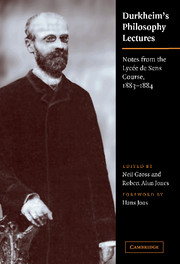Book contents
- Frontmatter
- Contents
- Foreword
- Translators' Note
- Acknowledgments
- Introduction
- Part I Preliminary Matters
- Part II Psychology
- Part III Logic
- Part IV Ethics
- Part V Metaphysics
- 69 Metaphysics. Preliminary Considerations
- 70 On the Soul and Its Existence
- 71 On the Spirituality of the Soul (Conclusion). On Materialism
- 72 The Relationship between the Soul and the Body
- 73 On the Immortality of the Soul
- 74 On God. Metaphysical Proofs of His Existence
- 75 Critique of Metaphysical Proofs of the Existence of God
- 76 Explanation and Critique of the Physicotheological Proof
- 77 Critique of the Physicotheological Proof (Conclusion). Moral Proofs of the Existence of God
- 78 The Nature and Attributes of God
- 79 The Relationship between God and the World. Dualism, Pantheism, and Creation
- 80 The Relationship between God and the World (Conclusion). Providence, Evil, Optimism, and Pessimism
- Appendix: Biographical Glossary
- Index
79 - The Relationship between God and the World. Dualism, Pantheism, and Creation
Published online by Cambridge University Press: 21 October 2009
- Frontmatter
- Contents
- Foreword
- Translators' Note
- Acknowledgments
- Introduction
- Part I Preliminary Matters
- Part II Psychology
- Part III Logic
- Part IV Ethics
- Part V Metaphysics
- 69 Metaphysics. Preliminary Considerations
- 70 On the Soul and Its Existence
- 71 On the Spirituality of the Soul (Conclusion). On Materialism
- 72 The Relationship between the Soul and the Body
- 73 On the Immortality of the Soul
- 74 On God. Metaphysical Proofs of His Existence
- 75 Critique of Metaphysical Proofs of the Existence of God
- 76 Explanation and Critique of the Physicotheological Proof
- 77 Critique of the Physicotheological Proof (Conclusion). Moral Proofs of the Existence of God
- 78 The Nature and Attributes of God
- 79 The Relationship between God and the World. Dualism, Pantheism, and Creation
- 80 The Relationship between God and the World (Conclusion). Providence, Evil, Optimism, and Pessimism
- Appendix: Biographical Glossary
- Index
Summary
We've now shown that God exists, and we've also determined His nature. What we must do next is examine the relationship between God and the world. It's generally agreed that God is the cause of the world. But how does this cause produce its effect?
Dualists believe that God has done no more than order the world, that when He began His work matter (the Χώρα [place] of Plato, the [matter] of Aristotle) already existed. According to the dualists, matter has existed for all eternity. But were this the case, matter would be another absolute, one that limits the power of God and thus contradicts His attributes. In addition, no matter how indeterminate we assume this matter to be, it still would function according to its own laws, so that God couldn't organize it completely as He pleased.
But why depict God as being outside of the world? Why couldn't the universe be God Himself? This view, called pantheism, wipes away the existence of individuals. It understands them to be phenomena of a common substance, which is God. So pantheism explains the relationship between God and the world by reducing it to those that obtain between a substance and its phenomena. Of course, there are different versions of pantheism. Materialist pantheism – found in the thought of the Stoics and Ionics – depicts the God-world as material in nature. Hegel's idealist pantheism, by contrast, conceives of it as spiritual and places the Idea at the beginning of all things.
- Type
- Chapter
- Information
- Durkheim's Philosophy LecturesNotes from the Lycée de Sens Course, 1883–1884, pp. 309 - 310Publisher: Cambridge University PressPrint publication year: 2004

